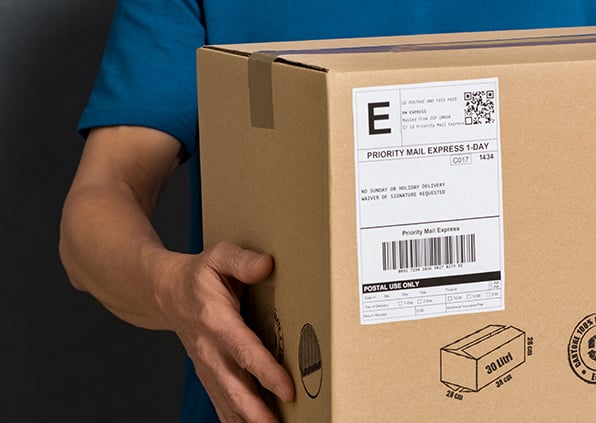You’re probably familiar with the quote, “If you can’t measure it, you can’t improve it.” Did you know that this concept, attributed to Peter Drucker, was actually taken out of context from another quote? In his book, The New Economics, American statistician W. Edwards Deming wrote, “It is wrong to suppose that if you can’t measure it, you can’t manage it – a costly myth.”
Those few extra words make quite a difference in meaning, don’t they? Of course, data and metrics are important when you’re trying to improve the management of your company. Dr. Deming simply realized that although not everything can be measured, it still must be managed, and businesses need to make decisions about those things as well. In the words of business blogger Billie Nordmeyer, “Getting more – more units produced, more sales, more revenue – for less – less waste, less labor, less cost – is every business leader’s dream.”
Eight ways to measure efficiency
In this blog post, we’ll take a closer look at eight different ways to measure efficiency. Companies often use multiples, methods and metrics, depending on what is being measured and the type of data available. Rest assured, for any given aspect of your business, there are a variety of ways you can measure it. Keep reading to learn about some approaches that you may not have considered.
Operational Efficiency
The first four examples represent operational efficiency metrics and will help you discover how to improve operational efficiency ongoing. If you’re looking to establish a more efficient operating model, start here.
1) Process
Repetitive business activities should be optimized to increase operational efficiency. BPTrends does an excellent job of describing the nine ways to measure a business process:
- Process Effectiveness measures the process performance against specified customer requirements.
- Process Efficiency measures the inputs and resources consumed by the process, versus established standards.
- Supplier Effectiveness measures supplier performance against specified process requirements.
- Units-in-Process measures the units of inputs and outputs between suppliers and customers. This is commonly referred to as work-in-process inventory.
- Product Cost measures the total cost to produce and deliver a unit of output, or “product.”
- Resource Productivity measures the ratio of outputs produced versus the resources consumed by the process.
- Process Cycle Time measures the time required from inputs supplied to outputs delivered.
- Process Alignment measures the level of match-up between customer demand, process outputs and supplier inputs.
- Process Compliance measures the extent to which a process adheres to third-party standards, such as ISO, SOX or regulatory guidelines.
2) Production
The efficiency of a production operation can be measured by the total number of units produced over a specified period of time, such as units produced per day or month. This measurement can be applied to an individual piece of manufacturing equipment, a production line, or an entire production plant.
3) Marketing
Marketing activities can be measured by a variety of financial metrics that assign a “cost per” figure to each marketing outcome achieved. For example:
- The marketing cost per new customer acquired
- The cost per contact of a call center
- The return on investment (ROI) for a marketing strategy
- The cost per piece (mailed or emailed) of a direct marketing campaign
.jpg?width=698&name=Blog%20Body%20Image%20%E2%80%93%20Business%20Efficiency%20(Brand).jpg)
4) Revenue per employee
At a macro level, the productivity of a company’s labor force can be measured by dividing total revenue by the number of employees. A company with a higher revenue-per-employee rate is generally a more operationally efficient business.
Business Efficiency
The next four examples pertain to business efficiency. Most efficient businesses are well-versed in each of the following and monitor them closely. If you’re looking for ideas to improve business efficiency, let these metrics be your guide.
5) Net profit margin
All businesses should know this key metric for their business: net profit, after taxes, divided by total sales. High net profit margins indicate good business efficiency but the definition of “good” can vary widely depending on the industry and the size of the business. An NYU report on the margins of U.S. businesses revealed an average net profit margin of 7.71% across industries. On average, 5% is considered low, 10% healthy and 20% high, but extraordinarily large corporations typically get by on thinner margins.
6) Accounts receivable turnover
This refers to how quickly you are paid by those who owe your company money. It can be measured by dividing total net sales by accounts receivable, which is the number of receivables paid during a fixed period. An efficient business has a high turnover, meaning sales are quickly converted to cash that can be used to pay bills and grow the business. Generally speaking, this means that you are doing an effective job of collecting debts from customers and/or are doing business with strong, stable customers. A low accounts receivable turnover ratio, on the other hand, could indicate that your collections process is in need of attention or your customers are on shaky ground financially themselves.
7) Accounts payable turnover
The accounts payable turnover ratio addresses how quickly you pay your own suppliers. It can be expressed as a numerical ratio or in a number of days and is calculated by dividing total supplier purchases by your average accounts payable balance for that time period (e.g., one year). The higher the number, the more difficult it is for you to pay suppliers on time – or are choosing not to. Paying suppliers on time leads to long-term business efficiencies and fosters strong supplier relationships.
8) Inventory turnover
Product-based businesses often use a ratio that shows how long it takes for inventory to be sold. To determine your inventory turnover, simply divide the cost of goods sold by the average inventory of one accounting period.
Maximize efficiency in branding and communications
As one of the five largest graphic communications companies in North America, Taylor is renowned for its ability to bring new levels of efficiency to the print, promo and marketing communications programs of our customers. Our proprietary PrintStack™ operating model, for example, enables us to improve the cost efficiency of our customers’ corporate print programs. Follow the links above to learn how Taylor is driving efficiencies and powering brands for businesses from coast to coast.










